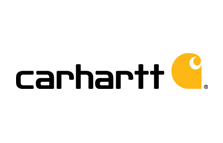- About Trend Micro
- Customer Stories
- Carhartt
Carhartt
Strengthens security and addresses PCI and GDPR compliance
Overview
Founded in 1889, Carhartt, Inc., is a U.S.-based manufacturer that is world-famous for the quality and durability of the work clothes it produces. A family-owned company for over 120 years, Carhartt originally produced clothing primarily for railroad workers. Over time, the company’s clothing items evolved to further extend durability by including the use of high-tech materials resistant to flames, abrasion, and water. Today, Carhartt manufacturers a variety of clothing commonly found on construction sites, farms, and ranches. Carhartt’s apparel is carried by major chains, such as Bass Pro Shops and Cabela’s and international retailers in North America, Europe, Japan, and Australia.
Challenges
Recognizing that the manufacturing industry is a significant target for cyberthreats, Carhartt felt it lacked the security strategy and tools to protect its IT environment, data, and endpoints. In mid-2016, Carhartt hired Tim Masey as Director of Cybersecurity, and tasked him with improving security and compliance for Carhartt’s business. “When I came on board, I recognized that we needed to consolidate security controls and create a framework that would allow us to become a risk-adverse organization,” explain Masey.
One of Masey’s initial concerns was the company’s reliance on less than effective IT security tools. “We had very little interaction with our prior vendor and we were disillusioned with their security products,” said Masey. “We were eager for a better solution with visibility into security events and improved manageability.”
In addition to state-of-the-art connected threat protection, Carhartt was interested in improved compliance capabilities. Carhartt is growing its ecommerce and retail businesses, so compliance with the Payment Card Industry Data Security Standard (PCI DSS), particularly with key capabilities like file integrity monitoring, was essential. Carhartt also conducts business in Europe, so compliance with the European Union’s General Data Protection Regulation (GDPR) was critical.
Why Trend Micro
Carhartt was first introduced to Trend Micro through technology partner, CDW. Cybersecurity implementation partner, Optiv, helped Carhartt understand the quality of Trend Micro solutions for both on-premises and cloud environments. Combined with the layering of connected threat defense, both on-premises and cloud environments can be monitored on a single-pane, in one central system.
After a thorough review process of both traditional security players and single-solution companies, Carhartt chose Trend Micro. They felt its state-of-the-art solutions were the most thorough and reliable for their needs. Carhartt’s final decision was reinforced by the recognition of Trend Micro in the Gartner Magic Quadrant for Endpoint Protection Platforms (EPP). “We needed more than a point solution. Trend Micro’s industry model and the fact that they’ve been a leader in this space for a long time, and in business for almost 30 years was very important to us,” said Masey.
"We needed more than a point solution. Trend Micro’s broad security model and the fact that they’ve been a leader in this space for a long time was very important to us."
Tim Masey,
Director of Cybersecurity, Carhartt
Solution
Carhartt implemented Trend Micro™ Smart Protection for Endpoints, to reduce the number of threats coming into its environment through various endpoints. “Malware protection, integrity monitoring, and the ability to have intrusion protection and detection are critical for us,” explained Masey.
Carhartt uses Trend Micro™ OfficeScan™ XG software to improve security for the company’s 5,600 users. Trend Micro™ Cloud App Security solution, with data loss prevention (DLP), is supplementing the protection of Microsoft® Office 365® products, improving cloud threat detection, and adding sandbox malware analysis and DLP policies, which help with PCI DSS and GDPR compliance. Trend Micro™ Deep Security™ platform allows Carhartt to develop extensive policies for intrusion protection (IPS) and leverage built-in integrity monitoring to protect their entire VMware virtual server environment.
To improve visibility through centralized monitoring and alerting, for devices across the company, Carhartt uses Trend Micro Control Manager™ solution. Control Manager solution centralizes visibility and produces reports that document how they are meeting compliance and regulatory requirements. It is also integrated with Carhartt’s security information and event management (SIEM) tool for 24/7 monitoring.
"We are now PCI compliant and we are closing in on GDPR compliance. We couldn’t have achieved that without Trend Micro."
Tim Masey,
Director of Cybersecurity, Carhartt
Results
“We’ve reduced IT risk throughout the organization and we are ensuring that the confidentiality, integrity, and availability of our data is consistent and rolled out on a programmatic basis,” said Masey.
Masey estimates Trend Micro solutions have stopped 20 to 25 malware attacks over the last six months, and between 3,000 and 4,000 web reputation events. “Only 50% of our endpoints were protected with the previous solution,” he said. “With Trend Micro we have already achieved 98% coverage, and it took only six months to implement.”
Carhartt has increased its security visibility by 100 percent and improved its regulatory and contractual compliance across multiple entities and lines of business. Carhartt achieved PCI DSS compliance in 13 months and expects to be GDPR compliant, including being able to report on a breach within 72 hours, in May 2018. “We are now PCI compliant and we are closing in on GDPR compliance. We couldn’t have achieved that without Trend Micro,” said Masey.
What's Next
Now that Carhartt’s IT security is on track, the company is considering adding Trend Micro™ Deep Discovery™ Analyzer to help them avoid zero-day threats. “Manufacturers are a target for cyberattacks, so it’s important to develop a solid security framework with proactive capabilities,” said Masey. “We are also looking at IoT-enabled technologies to help with our supply chain and manufacturing floor processes. It takes much more than a single point solution vendor to protect all of that. That’s where Trend fits in.”

Carhartt
www.carhartt.com
IndustryManufacturing, Retail
Employees5,000
PartnerCDW
Optiv
RegionNorth America, United States
Products Smart Protection Complete
OfficeScan XG
Cloud App Security
Data Loss Prevention
Control Manager
Deep Security
IT EnvironmentVMware, Microsoft Office365, Microsoft Azure, two data centers with 400 servers
RelatedVideo: meeting GDPR requirements with security by design

